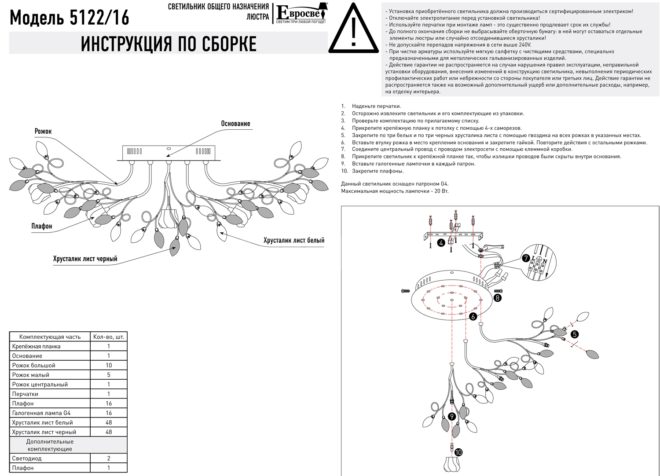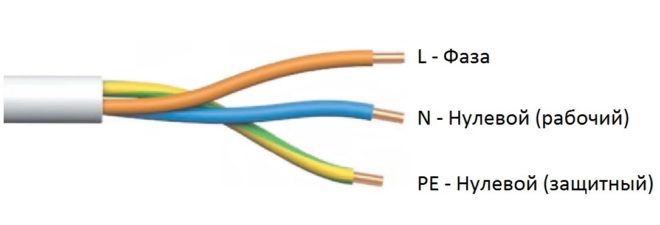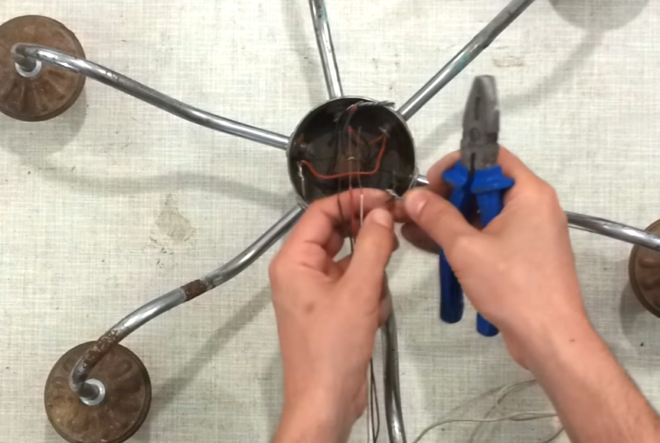Connecting a chandelier with 3 wires to a switch
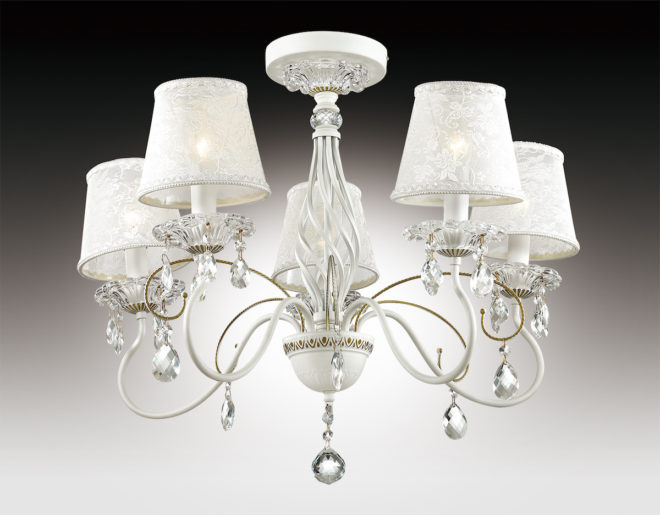
The chandelier belongs to those interior items that people begin to get acquainted with almost from birth. A baby lying in a stroller or crib looks at the beautiful luminous device on the ceiling with interest. Any large room in an apartment or house is necessarily equipped with a chandelier, which is fixed in the center of the ceiling. It not only becomes an interior decoration, but also allows you to evenly distribute the lighting load over the space of the room. To vary the illumination of a room, chandeliers with 5 or more bulbs are most often used. Such lamps will be discussed in this article. Let's talk about how to connect a chandelier with 3 wires, what is needed for such work, and can a person do this without special electrical engineering education?
Device
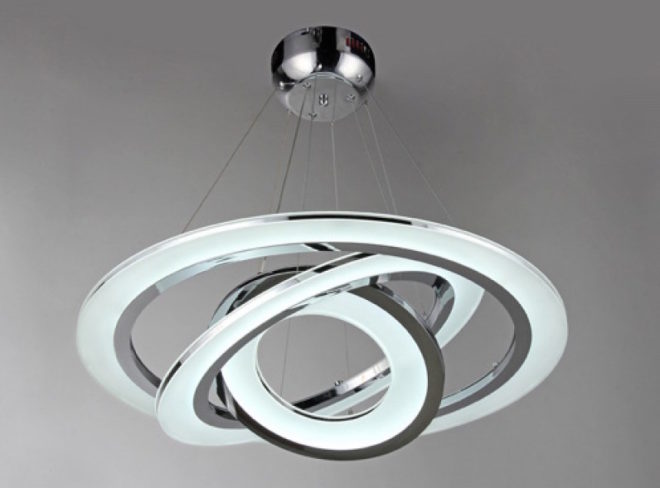
On the modern market, there is a wide range of lighting fixtures with intricate designs, a large number of LEDs or lamps, with remote controls. However, until now, the majority prefers to install a five-arm chandelier in their living rooms.
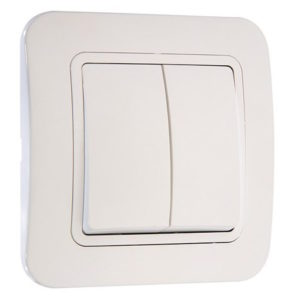 If such a chandelier is connected to a single switch, this will entail a large consumption of electricity. Agree, it is not always necessary that all five horns glow in the room, sometimes two or three are enough. Therefore, the most popular is the connection diagram for a chandelier with a double switch. We will talk about such a scheme below, and before connecting the chandelier to a household two-button switch, let's figure out what such a lamp consists of and how it works.
If such a chandelier is connected to a single switch, this will entail a large consumption of electricity. Agree, it is not always necessary that all five horns glow in the room, sometimes two or three are enough. Therefore, the most popular is the connection diagram for a chandelier with a double switch. We will talk about such a scheme below, and before connecting the chandelier to a household two-button switch, let's figure out what such a lamp consists of and how it works.
First of all, this is the basic design for 5 horns. Regardless of where the lamps are directed (downward or upward), the fastening of sockets and lampshades with horns is carried out in the same way - using threaded connections. Each horn at the end looks like a threaded tube; a decorative cover is attached to it with a nut. But very often fastening occurs due to the bottom of the cartridge, which is screwed onto the carob thread. You need to connect wires to the cartridge and screw in the bulbs, it is in it that their direct contact occurs. Shades are used to diffuse light, and also perform a decorative function, most often they are made of metal, glass or plastic.
Chandelier wires most often run inside a metal structure. The plafonds are attached to the luminaire body using latches, bolts or a plastic ring that is screwed onto the socket thread. From each socket inside the horn, a 2-core wire is connected to the connection box of the luminaire.
You can install a variety of lamps on a chandelier - incandescent, fluorescent, LED, energy-saving.
The chandelier body can also be equipped with a power supply or a ballast for starting LED and fluorescent lamps.
There are chandeliers equipped with reflectors that have a white or mirrored surface and create directional light.
You can learn more about how to choose a chandelier and lamps for it in this video:
Tool

Before connecting a chandelier with three wires, prepare the necessary tool:
- Indicator screwdriver (it is needed to determine the phase and zero).
- Pliers with insulated handles.
- Knife (to strip the insulation on the veins).
- Multimeter.
- Insulating tape.
- Screwdrivers (flat and cruciform).
- Nippers.
- Marker.
Devices with which the wires will be connected.These can be special pads, in which the connected wire is clamped under a screw, spring or connecting insulating clamps (PPE). And don't forget, of course, the stepladder.
Wire assignment
Before connecting a room chandelier with a two-button switch, let's figure out how many wires we need and why each of them is needed.
Any lighting device must have a passport with the diagram indicated in it. Study it carefully, the assignment of wires by color is described there. As a rule, the phase is performed in white or brown, the blue wire means zero, and there may also be a third protective grounding wire, it is usually made in green or yellow. In total, 4 cores should come out of the chandelier - zero, protective ground and 2 phases.
If there is no passport for the lighting device, then we ourselves will determine where the phase is, and where is zero.
So, you have a hole in the ceiling from which three veins stick out, one of them is zero, and the other 2 are phase from a two-button switch. If your chandelier is with protective grounding, then there will be a separate fourth wire for this.
- Turn off the power supply to the apartment and set the keys of the double switch to the "Disabled" position.
- To avoid shorting, separate the three wires that protrude from the ceiling at a distance from each other to the sides.
- Remove the insulation from each core by about 1 cm.
- Apply voltage by turning on the machine and then the switch. Use the indicator screwdriver to touch each core, the one of them, upon contact with which the indicator does not light up, will be zero. Mark it with a marker.
- Now turn off the keys on the switch one by one and check the corresponding phase presence.
Determine the purpose of the cores in the luminaire using a multimeter:
- To begin with, set the "Call" mode on the device and short-circuit the probes for 1 second. An audible signal should sound, which means that you have correctly selected the measurement limit and the device is working properly.
- There are 2 contacts in the cartridge, one of them is phase, it is springy and located in the center, the second is zero, it is located on the side (when the bulb is screwed in, it touches it with its base).
- Also strip all four cores extending from the chandelier 1 cm.
- Now we need to find the zero core. Attach one probe of the multimeter to the zero (side) contact in any of the cartridges. With the second probe, touch the stripped wires in turn. As soon as you hear a sound signal, it means that this core is zero, also mark it with a marker.
- In a similar way, determine the correspondence of the two phase conductors extending from the luminaire. This time, with a multimeter probe, alternately touch the central phase contacts in the cartridges. In a five-arm chandelier, one phase vein is connected to three cartridges, and the second goes to the remaining two.
- To check the grounding wire, you need to touch it with one probe, and touch the metal body of the luminaire with the other, a sound signal will confirm the correctness of the choice.
Scheme with a one-button switch
To begin with, consider a simpler diagram - how to connect a three-arm chandelier with 3 wires. Here are three detailed step-by-step instructions. First, check the package contents of your lamp:
- Having opened the factory packaging, immediately find a list of the kits included in the chandelier, and check the presence of all components against the list.
- Find a bracket that will attach the chandelier to the ceiling. It is a strip that is directly screwed to the wooden base in the ceiling, and the chandelier cover will be attached to this strip.
- Check the presence and integrity of all shades.
- Next, there should be a device (you can call it the junction box of the chandelier), in which the wires will be disconnected, three horns are attached to it, and this mechanism itself is connected to the bracket cover. A double wire (phase and neutral conductors) is pulled through this device. One end of it will be connected to the phase and zero conductors that come out of the hole in the ceiling, the other end is designed to connect to the conductors in the horns.
- Usually the third ground wire is included in the luminaire kit separately.On the metal case (most often on the lid), a special icon indicates the place where the protective earth must be connected.
- Check for the presence of three horns, cartridges must be attached to them, and a phase and neutral conductor must come out of each.
Now let's look at how to connect the wires in the chandelier:
- Take one arm and the connection box of the luminaire where the connection will be made. Two veins come out of the horn (blue - zero, brown - phase). Pull them through one of the three holes and secure the horn.
- Do the same with the other two horns.
- As a result, 6 wires from the horns were obtained in the junction box of the luminaire - three blue and three brown, and a double 2-core wire, which will be used to connect to the network.
- Strip the insulation on all 6 cores from the horns and on the twin wire.
- Connect the three blue wires together from one strand of the twin wire, and in the same way connect the three brown wires to the second strand of the twin wire. Do this with a twist, you can also solder on top. Put on the insulating caps, they are usually included.
- Tuck all the wires neatly in the junction box of the chandelier and close the top with a cover.
- Connect the protective earth wire at the specified location.
It remains to connect our chandelier with three wires to the network:
- Before starting the electrical part of the work, de-energize the room by turning off the power switch.
- Fasten the fixing frame to the wooden structure in the ceiling using ordinary wood screws. This must be done as firmly and reliably as possible, because the bar will have to support the full weight of the chandelier.
- In order not to alter anything later, immediately try on the lamp, lightly attaching the decorative bolts. Look, if everything suits you, then unscrew the bolts and start connecting the wires.
- It is advisable to do such work with a partner so that one person can hold the connected lamp, and the other is engaged in the connection. If there is no partner, then fix the lamp to the installed strip by tying it tightly with a string or a piece of strong wire.
- Start by putting self-locking terminal blocks on the wires sticking out of the hole in the ceiling. Then connect the corresponding wires of the lamp to them.
- Now turn on the breaker and circuit breaker to test the correct operation. If all three lamps light up, turn off the switch, the machine and finish the work by finally screwing the lamp to the bar.
Now you know how to properly connect a three-arm chandelier, let's look at a more complex option - connecting the chandelier to a double switch.
Scheme with a two-button switch
Connecting a five-arm chandelier to a household two-button switch is performed in the same way.
- From the junction box comes a zero core, which is laid to the lamp, all five zero cores from each lamp will be connected to it.
- The phase core from the box comes to a two-button switch, two cores extend from it, which will supply voltage to one and the second group of bulbs.
- In the junction box, the zero and phase conductors are connected to the phase and zero of the supply network.
- Instead of 6 wires in the junction box of the luminaire, as in the three-arm version, 10 (5 phases and 5 zeros) will now be output.
All five blue zero cores in the luminaire must be connected into one common harness. And from the phase veins, form two connecting harnesses - one of the three brown veins from the bulbs, the second, respectively, of two. That is, when one switch key is turned on, three lamps will light up, and when the second key is turned on, two.
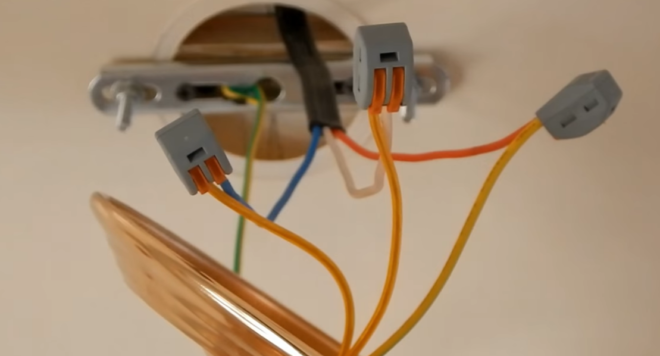
There are three wires in the junction box of the chandelier. Some ends are brought out to the upper part and will be connected to the veins brought to the hole in the ceiling to the point of fixing the lamp. Connect the other ends in this way:
- Blue zero core with a connecting harness of five zero cores of all lamps.
- One phase conductor, for example brown, with a connecting harness of the phase conductors of three lamps.
- The second phase conductor, for example, white, with a connecting harness of the phase conductors of two lamps.
You have three stripped veins sticking out of the hole in the ceiling, in the place where the lamp will be fixed. Connect them to the phase and zero conductors of the chandelier, respectively. In the case of the protective grounding of the luminaire, there will be a fourth wire and connection.
You can see that, by analogy with the simpler option, connecting the chandelier to a double switch is also easy. More information about connecting a chandelier can be seen in this video:
I would like to give a little advice on inexpensive Chinese chandeliers. Check all wiring for integrity immediately after purchase. They often already contain the entire electrical part in the junction box of the chandelier, check the reliability of the contacts. It will be a shame if you then have to redo such a huge work.
Now you know how to connect a 5 or 6 arm chandelier to a double switch. In principle, if you have basic knowledge of electrical engineering, it will not be difficult for you to do this. But it will turn out to save a little on calling a professional electrician.

